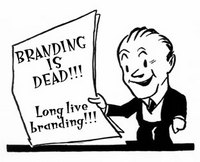 Back in the go-go '80s, my art director and I made silk purses out of some serious sow's-ear assignments and so were let into the inner sanctum: pitching spots for the second pool of a wildly successful TV campaign for the agency's big, fat American car account.
Back in the go-go '80s, my art director and I made silk purses out of some serious sow's-ear assignments and so were let into the inner sanctum: pitching spots for the second pool of a wildly successful TV campaign for the agency's big, fat American car account.
The campaign was the first (yes, really) to use Boomer music to sell to Boomers. It was such a radical notion back then that many of the artists passed on the opportunity to score cash, either for fear of compromising their art or of tarnishing their image among their fanbase (i.e., diluting their own brand). Hell, it was such a new thing, maybe no one knew what to ask for. End result was the client had to pay scads of money for really expensive soundalikes for many, many executions.
Anyway.
Kate (art director) & I were pretty passionate about creating good work back then, and, in my Virgo-perfectionist-good girl way, I was even then concerned with adhering to Campaign Strategy, Brand Personality and Unique Selling Proposition. Not really a problem; to the contrary, I enjoy working within the confines of an assignment way more than blue-sky creativity. Blank pages make me panicky.
And we could be mostly honest! The cars had been restyled to look hipper. They had even re-engineered some stuff to make them...um...drive better and stuff. So we wrote spots to tell (boomer) America how these cars were made just for them, with (boomer) music and (boomer-relevant) stories to match. But for the client, there was always one thing missing: enough "branding."
We puzzled and puzzled over this: the campaign had, we thought, successfully redefined the brand. People were talking about it (buzz), people were buying cars (sales), what exactly was the problem here?
Our older, wiser creative director, a real Car Guy from the three-martini-lunch days, explained: frames on the storyboard that featured close-ups of the car brand doohickey affixed to the vehicle. Lots of them. So we added them, alternating them with driving shots, until there was an acceptable ratio. Which Kate, as an Advertising & Branding Specialist, would point out when she took the clients through the visuals: "Drive, drive, drive; branding, branding, branding."
So the magical, mythical marketing tool of "branding" came down to this: two young women slapping more product shots on a storyboard so we could get this sucker in the hands of directors, producers and stylists who would do the real work of making this product seem meaningful to the consumer. And this was considered successful branding. By everyone. At least, everyone I came in contact with back then.
And in a way, it was. The process (of advertising, movies, film, etc) has become so transparent to consumers that even the hipper advertising of the 1970s, 1980s & 1990s seems quaint, if not outright camp. The emperor is buck naked; branding is dead. Hugh MacLeod speaks of it elegantly (and way more concisely) here. (He'll also lead you to lots more great links on the topic because he's good like that.)
I've no doubt that as the marketplace has shifted, the processes at agencies have gotten more sophisticated to try to adapt to the new reality. I doubt that our impertinent display of cynicism would be tolerated in a meeting, especially a client meeting, today.
But while I've been out of the development game for awhile, I'm still a consumer. And an employee: I act in these masterpieces of marketing that I then see on TV (as often as possible, I hope, if they're airing National Network). And I gotta say, I think there are still a lot of marketing peeps out there more interested in ramming a USP down someone's throat than they are in initiating a dialogue.
xxx
c